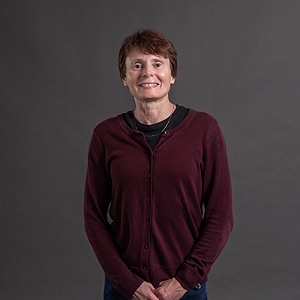About the lecture
Third generation artificial turf pitches have an interesting history that began in the late 1990s.
Specifically developed for football, they feature a blend of synthetic grass fibres and infill materials of sand and rubber granules, designed to mimic the feel and playability of natural grass. This innovation provided improved shock absorption, better traction, and enhanced ball interaction characteristics.
Their introduction revolutionised football globally, offering a reliable and consistent playing surface that could withstand heavy use and varying weather conditions.
Professor Forrester’s inaugural lecture will explore how engineering has enhanced player experience on artificial turf. She will discuss the evolution of pitch design, the role of the governing body’s regulations, and the importance of player experience in this process.
She will also consider the role of engineering in maintaining pitch performance throughout its lifespan of a decade or more. Finally, she will discuss the future of these pitches, in a society where environmental legislation is driving changes to pitch design; and how engineering can play a vital role in finding new solutions that continue to provide acceptable play performance.
About the lecturer
Professor Steph Forrester’s academic career started at the University of Edinburgh where she gained a BEng in Chemical Engineering. She completed her PhD at the University of Cambridge before accepting a postdoctoral position in Australia.
Following several years as a professional triathlete – including representing Team GB at the 2000 Olympics – Steph returned to academia and completed her MSc in Sports Biomechanics at Loughborough. She joined the Sports Technology Institute as a Lecturer in 2008 and received her Chair in 2023.
Her research focuses on artificial turf sports surfaces, player-surface interactions, and related biomechanics. Her work has had significant impact – including the development of advanced player-surface interaction tests now used in the FIFA standards for football turf; improving and optimising the maintenance processes conducted on artificial turf pitches; and biomechanical input to a commercial running technique sensor.
As Programme Director for the Sports Technology undergraduate programme she oversaw its transition from BSc to BEng, secured its accreditation with the IET and IED, and developed the MEng programme. Most recently, Steph led the development of the MSc Sports Engineering programme.
For further information on this lecture, please contact the Events team.
